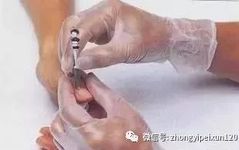Bloodletting therapy in Traditional Chinese Medicine (TCM) involves the puncturing of specific acupoints or superficial veins to release a small amount of blood as a treatment method. During the procedure, the skin is first disinfected, and a three-edged needle or a thick needle is used for quick puncturing and bloodletting. The needle should not be inserted too deeply, and an appropriate amount of blood is released to achieve the therapeutic purpose. This method is commonly used for conditions such as heatstroke, headaches, sore throat, carbuncles, and lower back pain.

Bloodletting therapy is a unique acupuncture treatment method in TCM. It was one of the most commonly used therapeutic techniques during the era of the “Huangdi Neijing” (Yellow Emperor’s Inner Canon), which even regarded bloodletting as the first choice for treating diseases and alleviating suffering.
With bloodletting therapy, fear no illness!
1Effects of Bloodletting Therapy
Antipyretic Effect:
In TCM, fever is primarily categorized into two types: excess Yang heat and other types. The antipyretic effect of bloodletting is applicable to the former.
Since excess Yang energy leads to an abundance of blood, bloodletting can reduce this excess, thereby diminishing the evil heat in the blood vessels and normalizing the body’s Qi and blood.
Analgesic Effect:
TCM holds that “where there is flow, there is no pain; where there is pain, there is no flow.” This means that diseases with pain symptoms must have blockages in their meridians.
Bloodletting can directly expel the stagnant pathogenic factors from the meridians, adjusting the blocked situation. Once the meridians are unblocked, the pain can be immediately alleviated.
In clinical practice, many acute diseases, such as headaches and others, have shown rapid and effective results with bloodletting therapy.
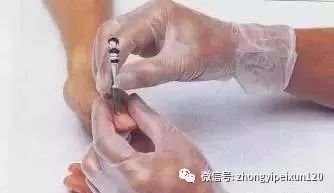
Detoxifying Effect:
The detoxifying effect in TCM refers to the symptoms that arise when the body’s functions are impaired and cannot resist toxic evils, such as “red thread carbuncles” caused by excessive toxic heat, and other conditions caused by toxic evils.
Bloodletting not only expels the invading toxic evils with the blood but also, more importantly, restores normal bodily functions through the principle of “regulating blood and Qi,” thus inhibiting the expansion and regeneration of pathogenic evils.
Clearing Heat Effect:
TCM believes that internal heat disturbances can lead to various diseases, often manifesting as irritability, body pain and swelling, impatience, and even fever, confusion, and other symptoms.
Bloodletting therapy can directly expel the heat evils with the blood, making it suitable for various heat syndromes.

Reducing Swelling Effect:
Swelling and pain are often caused by Qi stagnation and blood stasis, leading to obstruction in the meridians.
Bloodletting can directly eliminate the stagnant Qi and blood along with the pathogenic factors in the local meridians, promoting unobstructed meridians and achieving the purpose of reducing swelling.
Anti-Itch Effect:
Itching is a manifestation of wind evils present in the blood vessels; thus, the treatment principle is “treat the blood first to eliminate wind, as the blood flows, the wind will naturally disappear.”
Bloodletting regulates blood and Qi, ensuring smooth blood flow, thereby eliminating wind evils and achieving the effect of relieving itching.
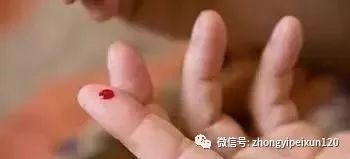
Relieving Numbness Effect:
Qi deficiency can prevent blood from reaching the extremities, or blood deficiency can fail to nourish, often resulting in numbness symptoms.
Using a fine needle to puncture acupoints on the affected limb to release a small amount of blood is guided by the theory of blood moving Qi, yielding good results.
Calming Nausea Effect:
Acute vomiting often belongs to excessive heat or liver Qi counterflow invading the stomach or food stagnation. Bloodletting can clear heat and calm liver counterflow, and also has the effect of guiding intestinal and gastric stagnation downward, thus calming nausea and stopping vomiting.
Stopping Diarrhea Effect:
The scope of bloodletting treatment generally refers to heat diarrhea caused by gastrointestinal stagnation or infectious causes, leading to the mixing of clear and turbid.
The mechanism is to clear heat and reduce fire, achieving the effect of elevating the clear and lowering the turbid.
Emergency Effect:
This refers to sudden fainting or convulsions with loss of consciousness. Bloodletting can improve blood circulation and is an effective rescue method.
2Acupoints for Bloodletting
Heatstroke:

1. Puncture the Zhongchong (PC 9), Weizhong (BL 40), and Shixuan (PC 8) acupoints.
2. Puncture the Shixuan acupoint, and then tap the elbow crease (Quxie, LI 11) and Weizhong acupoint until blood stagnation occurs, then puncture.
Coma, Shock: Puncture the Renzhong (GV 26) and Shixuan (PC 8) acupoints.
Drowning: Puncture the Renzhong (GV 26) and Huiyin (CV 1) acupoints.
Carbon Monoxide Poisoning:

1. Puncture the Renzhong (GV 26) and Dazhui (GV 14) acupoints.
2. Apply pressure from the patient’s shoulder to the Shixuan (PC 8) acupoint, then puncture the Shixuan acupoint.
Food Poisoning:
First, use a three-edged needle to puncture the Sijiao (PC 4) acupoint, then apply pressure from the patient’s wrist to the Sijiao acupoint to ensure sufficient bleeding, with the blood color changing from dark purple to light red as the standard. For mild cases, only puncture the hand Sijiao acupoint; for severe cases, add punctures around the navel (Shuifen, CV 9; Yinjiao, CV 7; Huangshu, CV 6), puncturing slightly deeper, 3-12mm;
If blood pressure drops, the complexion is pale or cyanotic, and the patient is in shock, puncture up to 15mm deep, then use a large glass fire cupping method with flash fire to cover five acupoints, including the navel, observing for congestion in the navel area like a red peach, and blood flowing in the four acupoints around the navel before removing the cup.
For severe shock and unconsciousness, use a thick needle with a diameter of 0.7-0.9mm to puncture the Zusanli (ST 36) acupoint, inserting the needle 15mm along the outer edge of the tibia, from shallow to deep, sliding the needle along the outer side of the tibia until a sound of piercing the periosteum is heard.
For severe abdominal pain and low blood pressure, simultaneously inject 0.5-1ml of atropine, and apply a hot water bag to the abdominal and lumbar area, drinking warm boiled water. This method is suitable for acute salt-loving bacteria food poisoning.
Headache:
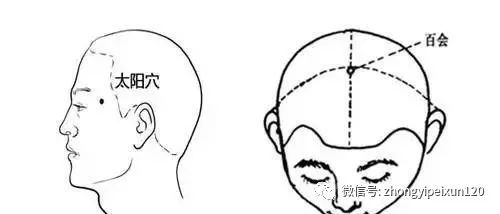
1. Puncture the Taiyang (EX-HN 5) and Baihui (GV 20) acupoints.
2. Puncture the Taiyang (EX-HN 5) and Yintang (EX-HN 3) acupoints: for frontal pain, add the Zan Zhu (BL 2) acupoint; for vertex pain, add Baihui (GV 20) and Sishencong (EX-HN 1) acupoints; for dizziness, blurred vision, and tinnitus, add the Touwei (ST 8) acupoint. Each acupoint can release five to six drops of blood; for robust individuals with severe headaches, it can be more than ten drops, once daily or every other day for a total of ten sessions. This method is suitable for hypertension-related headaches.
Common Cold:
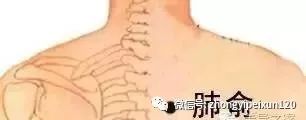
1. Puncture the Dazhui (GV 14) acupoint, then use flash fire cupping for 10-15 minutes. This method is suitable for fever without sweating.
2. Puncture the Shaoshang (LU 11) and Taiyang (EX-HN 5) acupoints.
3. Wipe the Feishu (BL 13) acupoint with alcohol until the skin turns red, then puncture.
Cough: Puncture the Feishu (BL 13) and Shaoshang (LU 11) acupoints, then use flash fire cupping for 10-15 minutes.
Pneumonia: Puncture the Dazhui (GV 14), Shixuan (PC 8), Chize (LU 5), Weizhong (BL 40), and Shierjing (EX-HN 12) acupoints.
Asthma: Use fingers to press and rub the Huagai (EX-HN 6) and Shanzhong (CV 17) acupoints 200 times, then puncture.
Trigeminal Neuralgia: Puncture the first small vein behind the ear. This method is suitable for initial onset.
Facial Nerve Paralysis:

1. Use a small eyebrow knife to cut the mucous membrane on the affected side to induce bleeding. This method is suitable for initial patients.
2. Puncture one or two of the following acupoints on the affected side: Xiaguan (ST 7), Qianzheng (ST 6), Taiyang (EX-HN 5), and Yangbai (GB 14), then apply flash fire cupping for 10 minutes. Repeat every three days.
Stomach Pain:
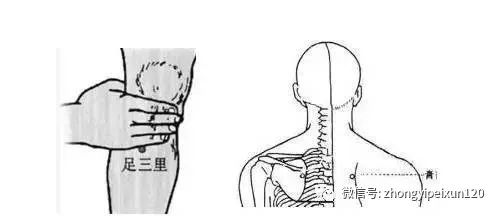
1. Puncture the Zusanli (ST 36) and Gaohuang (BL 43) acupoints.
2. Use hands to apply alcohol to the painful area until the skin turns red, then puncture the reddest area.
Abdominal Pain:

1. Apply pressure from the thigh down to the Shangqiu (SP 5) acupoint, puncture to release blood, then push down to the Liyang (SP 2) acupoint and puncture to release blood.
2. Use hands to apply alcohol to the popliteal fossa, and puncture after blood stagnation occurs.
Lateral Pain:

1. Use fingertips to massage the left and right sides of the chest, gradually increasing speed and pressure until the skin turns red, then locate red spots to puncture or prick to release blood.
2. Puncture the Yanglingquan (GB 34) and Qiaoyin (GB 2) acupoints, and puncture the painful area.
Epilepsy: During an epileptic seizure, urgently look for dark purple spots in the perineum and puncture to release blood.
Lower Back Pain:
1. Use hands to apply alcohol to the Yinjiao (CV 3) acupoint until the skin turns red, then puncture the red spots.
2. Puncture the tender points, then apply flash fire cupping (see “Cupping” therapy) for 10 minutes. This method is suitable for chronic lower back pain.
Acute Enteritis:
Puncture the Quxie (LI 11) and Weizhong (BL 40) acupoints; for vomiting patients, add puncture the Jinjing (ST 25) and Yuye (ST 24) acupoints. This method is suitable for those with watery diarrhea and dehydration.
Elephantiasis:

Puncture or prick the Zusanli (ST 36), Xiajuxu (ST 37), Yanglingquan (GB 34), and Sanyinjiao (SP 6) acupoints, as well as the most swollen areas. The puncturing technique should be firm, then apply flash fire cupping for 5-10 minutes, releasing blood and water, then bandage the leg with gauze, once daily.
After puncturing, avoid contact with dirty water, and do not use this method on ulcerated areas.
Tetanus: Puncture the Dazhui (GV 14), Renzhong (GV 26), Tai Chong (LV 3), and Erjian (LI 2) acupoints.
Erysipelas:
Puncture the red and swollen areas, applying slightly more pressure, then use flash fire cupping for 5-10 minutes (see “Cupping” therapy) once or twice daily.
Carbuncles: Puncture the Tianzong (SI 11), Lingtai (BL 10), Zhongshu (BL 12), and Shenzhu (BL 11) acupoints, then apply flash fire cupping for 10-15 minutes.
Scrofula: Rub the patient’s back until red spots appear, then puncture the red spots. Once a week.
Breast Abscess:
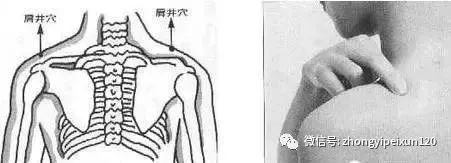
1. Puncture the Jianjing (GB 21) acupoint, then apply flash fire cupping for 10 minutes.
2. Search for reaction points 1.5 inches from the 5th to 7th thoracic vertebrae, where most patients have small red spots resembling millet. If not found, look for tender points on the back of the affected breast, puncturing three times in a row, forming a shape, then apply flash fire cupping for 15-30 minutes.
Hemorrhoids: Puncture the Yinjiao (CV 1) acupoint.
Eczema:

1. Divide the back of the ear into three equal parts; at the junction of the upper and middle third, a prominent small blood vessel can be found, which is the bloodletting point. Use a three-edged needle to puncture towards the inner side of the ear root to induce bleeding.
Depending on the location of the eczema, auxiliary acupoints can be selected to enhance efficacy. For upper limb eczema, add Neiguan (PC 6) for bloodletting; for lower limb eczema, add Sanyinjiao (SP 6) for bloodletting, and stimulate the Yanglingquan (GB 34) acupoint;
For generalized eczema, add Neiguan (PC 6) and Sanyinjiao (SP 6) for bloodletting, and stimulate the Baihui (GV 20) acupoint. Generally, a treatment course lasts 14 days, followed by a one-week break before the second course.
2. Puncture the affected area, then apply flash fire cupping for 10-15 minutes.
Neurodermatitis: Puncture the small vein behind the ear.
Urticaria (Hives):
1. Puncture the small vein behind the ear.
2. Puncture the Xuehai (SP 10), Quchi (LI 11), Sanyinjiao (SP 6), and Zusanli (ST 36) acupoints.
Stiff Neck: Locate the tender points, then puncture, followed by flash fire cupping for 10-15 minutes.
Sprains and Strains:
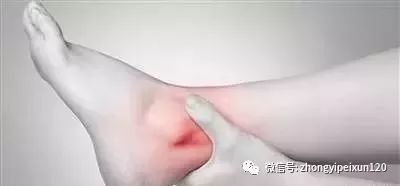
First, massage the affected area for a few minutes to find the tender points; then, massage the corresponding area on the healthy side. When the pain in the affected area alleviates while the healthy side remains slightly painful, puncture the affected area for 3-5 minutes.
Mumps (Epidemic Parotitis):
1. Puncture the Hegu (LI 4), Erjian (TE 2), and Baihui (GV 20) acupoints.
2. Puncture the second small vein behind the ear.
3. Puncture the Linpe (ST 4) and Jiachao (ST 6) acupoints.
Whooping Cough: Puncture or prick the Sifeng (EX-UE 1) acupoint.
Fever in Children:
1. Puncture the Shizhu (PC 8) acupoint.
2. Puncture or prick the Sifeng (EX-UE 1) acupoint.
Acute Convulsions: Puncture the Renzhong (GV 26), Shixuan (PC 8), and Yongquan (KD 1) acupoints.
Accumulation of Food: Puncture or prick the Sifeng (EX-UE 1) and Yujie (LU 10) acupoints.
Childhood Asthma: Puncture or prick the Sifeng (EX-UE 1) acupoint.
Oral Ulcers in Children: Puncture the Sifeng (EX-UE 1) acupoint with a three-edged needle, quickly twisting it around after puncturing under the skin.
Thrush: Puncture the oral ulcer surface, using the blood drawn to cover the ulcer completely.
Hordeolum (Stye):
1. Puncture the Dazhui (GV 14) acupoint, then apply flash fire cupping for 10-15 minutes (see “Cupping” therapy).
2. Puncture the small vein behind the ear.
3. Puncture the acupoint located 3 inches from the 5th thoracic vertebra on the back for hordeolum.
Corneal Ulcer: Puncture the ear tip and Taiyang (EX-HN 5) acupoints, allowing the blood drawn to drip into the affected eye.
Eye Floaters:
1. Puncture the Dadun (LV 1) acupoint, then massage from the knee to the Dadun acupoint.
2. Puncture the Jingming (BL 1) and Taiyang (EX-HN 5) acupoints.
Acute Conjunctivitis (Epidemic Hemorrhagic Conjunctivitis):
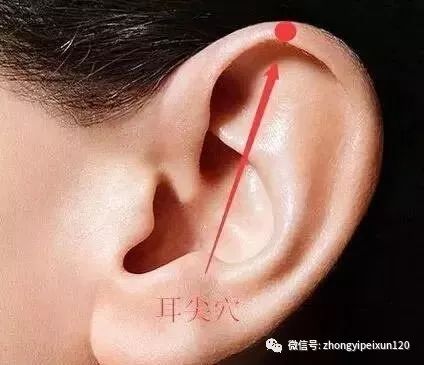
1. Use a smooth, blunt stick to evenly press on both earlobes to find symmetrical tender points, which often appear as small nodules the size of millet, slightly different from the surrounding skin.
If no points can be found, use the eye area of the earlobes instead, puncturing and gently squeezing to draw blood, with 3-5 drops per acupoint, 7-8 drops for severe cases, and 10 drops for extremely severe cases. If redness and swelling are severe, accompanied by chills, fever, and general discomfort, add puncture to the Taiyang (EX-HN 5) acupoint;
If the eyeball is particularly red and swollen, with unbearable pain, and the sclera shows pinpoint hemorrhages, also puncture the Zan Zhu (BL 2) acupoint, while applying 0.25% chloramphenicol eye drops 3 or 4 times daily.
2. Puncture the ear tip and prick the small vein behind the ear.
Acute Tonsillitis:
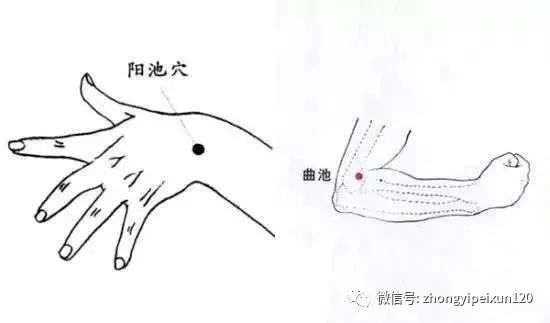
1. Puncture the Shaoshang (LU 11), Shangyang (LI 1), and Guanchong (PC 8) acupoints, and combine with fine needle acupuncture at the Tianrong (ST 16) and Hegu (LI 4) acupoints, or Neiting (ST 44) and Quchi (LI 11) acupoints.
2. Puncture the Shaoshang (LU 11), Shangyang (LI 1), Chize (LU 5), and Quchi (LI 11) acupoints.
3. Puncture the ear tip and prick the small vein behind the ear.
Toothache:
1. Puncture the Lieque (LU 7) acupoint, then massage for 15 minutes.
2. Prick the small vein behind the ear.
3. Puncture the Shangyang (LI 1) and Xiaguan (ST 7) acupoints, then apply flash fire cupping for 5-10 minutes at the Xiaguan acupoint.
Dizziness:
Use the cutting method. Disinfect the small vein behind the ear with an alcohol swab, then use a razor blade to cut, allowing blood to flow, and then apply a bandage.
Chronic Dermatitis:
Use the cutting method. In the groove between the ear ridge and the auricle, there are small blood vessels; disinfect the area, use a disinfected razor blade to cut and release blood, then apply a bandage over the cut. This method should be repeated every 20-30 days, as chronic dermatitis may require multiple cuts.

